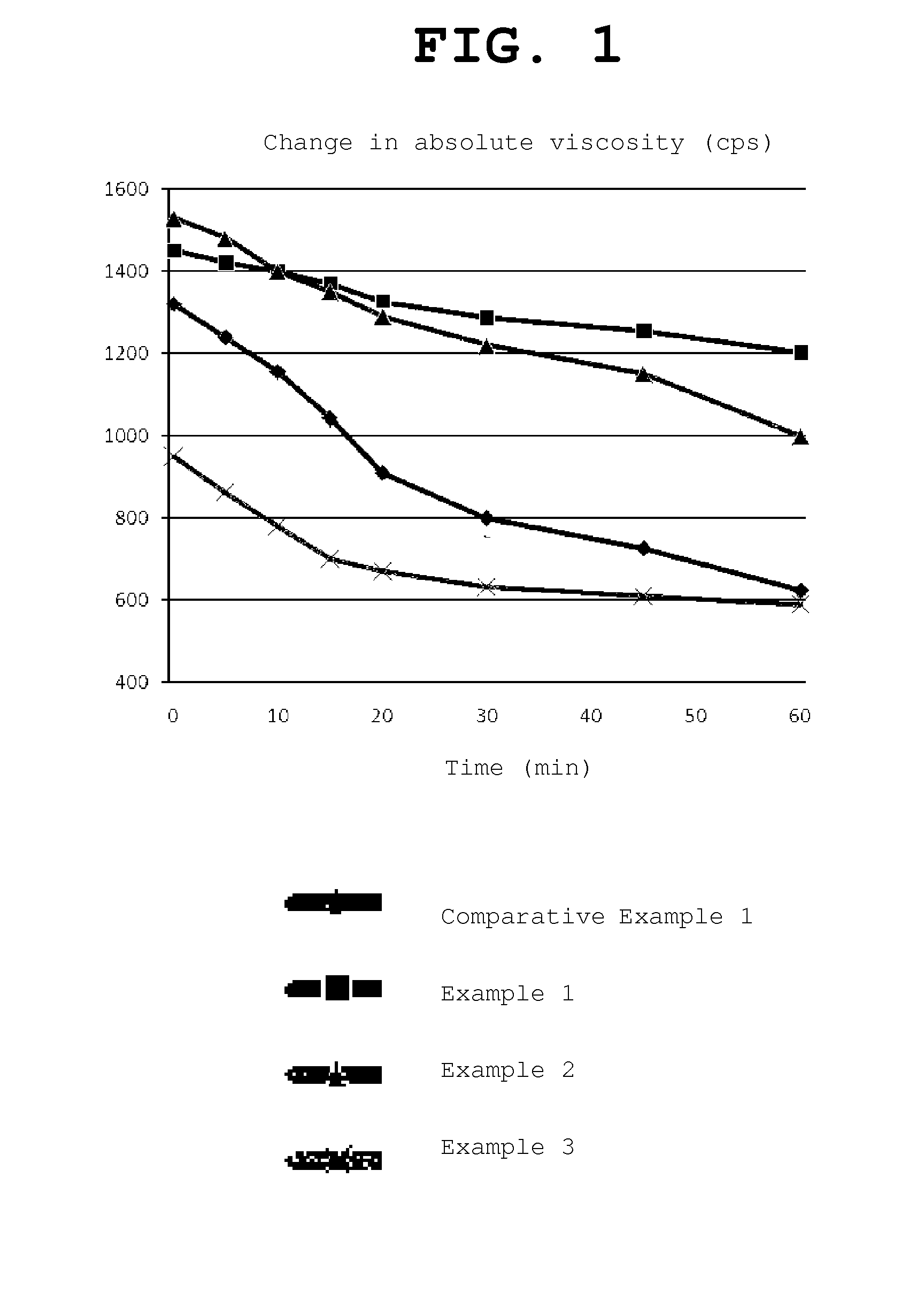Adhesion barrier containing hyaluronic acids and l-arginine
a technology of arginine and hyaluronic acid, which is applied in the field of anti-adhesive agents containing hyaluronic acid and larginine, can solve the problems of insufficient effect of hyaluronic acid alone, difficulty in actual application of hyaluronic acid, and insufficient effect of hyaluronic acid
- Summary
- Abstract
- Description
- Claims
- Application Information
AI Technical Summary
Benefits of technology
Problems solved by technology
Method used
Image
Examples
example 1
Preparation of Anti-Adhesive Agent Containing Hyaluronic Acid and L-Arginine
[0028]Sodium hyaluronate and L-arginine were mixed with each other at a weight ratio of 75:25, and the mixture was mixed with distilled water at a concentration of 5.0 mg / ml and stirred at 25° C. for 1 hour, thereby preparing an anti-adhesive agent.
examples 2 and 3
[0029]Anti-adhesive agents were prepared in the same manner, except that the mixing ratio between hyaluronic acid and L-arginine was changed as shown in Table 1 below.
example 2
Anti-Adhesive Effect in Abdominal Cavity
[0033]In order to examine the anti-adhesive effect of the inventive anti-adhesive agent, 4-week-old Sprague-Dawley rats (weight: about 250-300 g) were used in the test. 20 rats were used for each Comparative Example, and 10 rats were used for each Example.
[0034]The abdomen of each rat anesthetized with ether was opened, and the caecum was taken out. A wound having a size of 2×2 cm was formed in the serous membrane, and a wound having the same size was formed in the abdominal cavity membrane. Then, the abdomen was treated with each of the anti-adhesive agents of Examples 1 to 3 and Comparative Examples 1 and 2 and sutured. After 2 weeks, the rats were euthanized and the abdomen of each rat was opened. Then, the degree of adhesion and the strength of adhesion were examined. The degree of adhesion and the strength of adhesion were evaluated according to the criteria shown in Table 3 below, and the results of the evaluation are shown in Table 4 be...
PUM
| Property | Measurement | Unit |
|---|---|---|
| weight ratio | aaaaa | aaaaa |
| concentration | aaaaa | aaaaa |
| weight | aaaaa | aaaaa |
Abstract
Description
Claims
Application Information
 Login to View More
Login to View More - R&D
- Intellectual Property
- Life Sciences
- Materials
- Tech Scout
- Unparalleled Data Quality
- Higher Quality Content
- 60% Fewer Hallucinations
Browse by: Latest US Patents, China's latest patents, Technical Efficacy Thesaurus, Application Domain, Technology Topic, Popular Technical Reports.
© 2025 PatSnap. All rights reserved.Legal|Privacy policy|Modern Slavery Act Transparency Statement|Sitemap|About US| Contact US: help@patsnap.com

